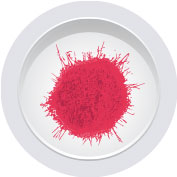According to Rein Munter, Advanced Oxidation Process(AOP) could be the “water treatment processes of the 21st century.” It is useful in water treatment plants and for in situ environmental remediation. It functions by using highly oxidative chemicals, catalysts and ionizing radiation to create hydroxyl radicals which can react with almost any chemical. The
goal being to mineralize all harmful substances to benign substances, such as carbon dioxide and water. It has been successfully used by Bell Telephone Labs to make
extremely pure water for manufacturing integrated circuits. ARCO Products company uses AOP to treat a million gallons of oily waste water annually(1). While the technique is very effective at lowering the concentration of contaminants, as low as 5 ppb, it is not economically feasible enough for use in large scale drinking water treatment plants (2).
One problem with AOP is it uses highly reactive chemicals such as Ozone, Hydrogen Peroxide and a variety of permanganates and persulfates. They are difficult to produce, store, transport and can injure people if not handled properly. The photocatalytic oxidation processes, such as using semiconducting Titanium Dioxide under strong UV, is slightly stronger oxidatively than the chemicals, but is not as versatile as the chemicals. Another problem is that depending on what your contaminants are different chemical, catalysts and treatments are required to achieve mineralization of toxic materials (3).
A solution to both these problems is to use Oxidation cells. We are developing a technology, much like a battery, were you can direct an oxidative current to exactly where and when you need it and stack them to get the power that you need. Since the cells can be stacked they can produce a higher oxidative stress than any chemical could on it’s own. It is much easier to administer than chemical processes. A salt-bridge and a conducting wire must be run from the oxidation cell to the dirty water. A switch can be placed in the conductive wire to turn the cell on and off, like any easy to use consumer electronics. This set up pulls electrons from the waste water and creates a highly oxidating environment. This is similar to another process of indirect oxidation known as anodic incineration which uses electrolysis to separate molecules where one half is a highly oxidative molecule (4).
One application of Advanced Oxidation Processes is to use it out in the field in contaminated sites. These methods have been used to great effect in a number of occasions. San Jose experienced a contamination of groundwater with Volatile Organic contaminants(VOC) . Application of UV, Ozone, and Hydrogen Peroxide were able to remove 90% of the VOC’s. AOP was also applied to the Bofors Nobel Superfund site in Muskegon, MI starting in 1994 (1). They have been operating their ground water treatment plant since 1998 and have so far removed 4500 pounds of organic pollutants (5).
In situ oxidation possess a unique set of problems compared to bench and water treatment level oxidation. Due to large areas, large quantities of oxidizable reactants, and potential life in the area successfully implementing chemical oxidation is a challenge. Engineers and Site managers will have to perform many observations (hydro-geological, chemical, biological), feasibility studies, and create a remedial design. While smart scientific judgement can speed this process along, trial and error finds the most effective methods (2). Regular progress test must be made, and progress requires changes in the treatment methodologies as the relative amounts of chemicals change compared to each other.
Early iterations of our salt bridge technology operates on the scale of a meter. Perfect for sedentary application such as inside of a waste water treatment plant. But with further improvements to our saltbridge technology we see the day when we can clean polluted aquifers by incorporating it with well technology. A well bore and a water column can fulfill the functions of conductive material and salt bridge and opens up the possibilities for in situ electro-ionic oxidation.








